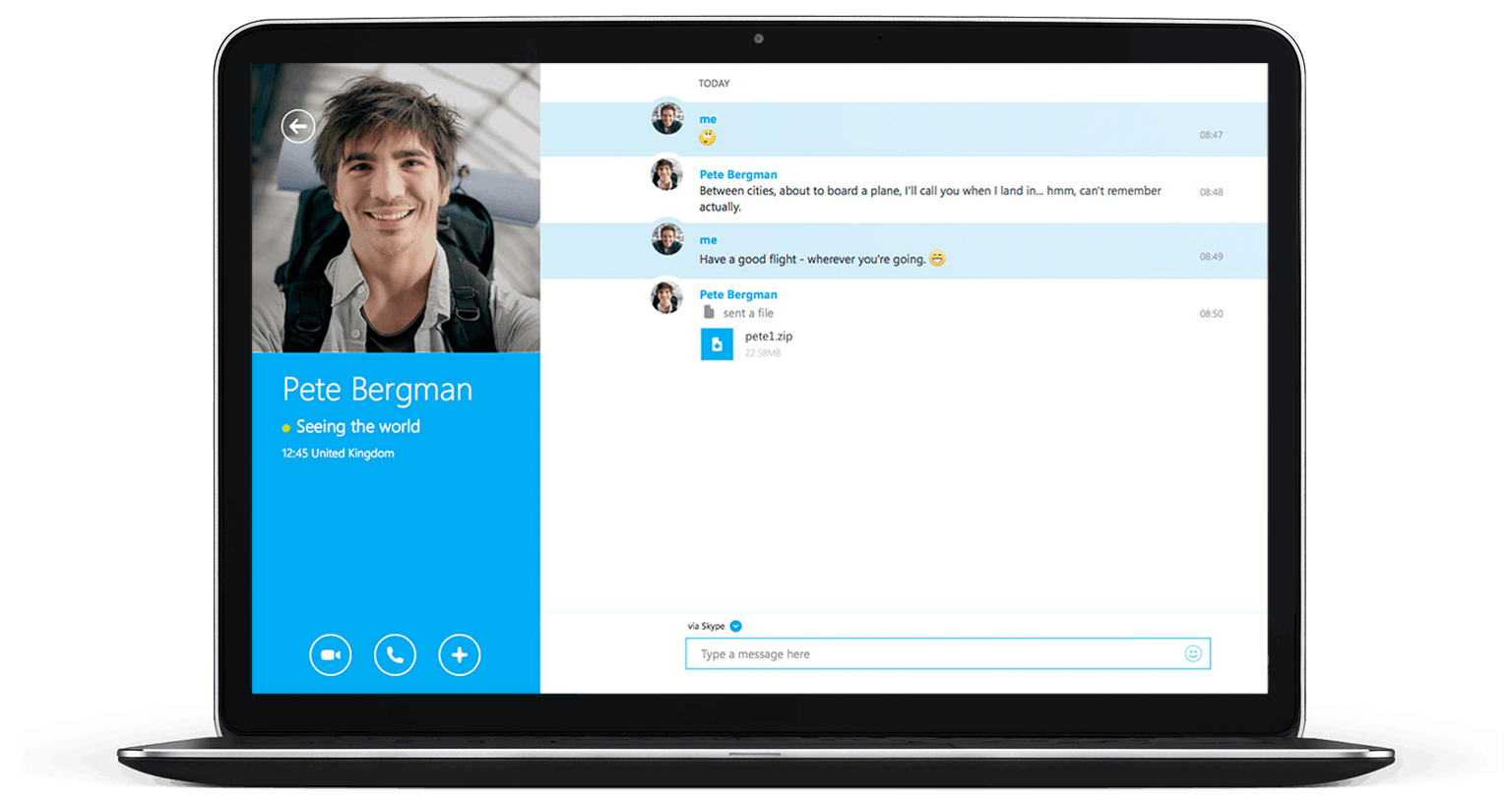
DO ONE: Tools & Technologies
Intro
In this section of the DO ONE unit you will find an introduction to different tools and technologies you can use for setting up online dialogues as well as some central characteristics of video-conferencing technologies. Here you will find tables that allow you to get an overview of some of the similarities and differences between central video-conferencing tools that will allow you to reflect on the video-conferencing tool that will suit your online dialogue best.
CONTENT
EXERCISES/ TASKS
LEARNING OUTCOMES
Do One - Tools and technologies
- Overview of online video conferencing tools
- A look at levels of openness in video conferencing tools
- In depth look at Skype, Zoom and Google hangouts on air
- Guides on how to install software
- Reading
- Exploring content
- Choosing and downloading a video conference tool
- Understand what video conferencing tools are
- Reflect on different levels of openness in video conferencing tools
- Familiarize yourself with Skype, Zoom and Google hangouts on air - to such a degree that you can chose a video conferencing tool and try it out.
Overview of online dialogue software(Video conferencing tools)
Video conferencing tools is software that facilitates online dialogues. This can be meetings and seminars and other online dialogues. Most of these video conferencing tools have extra features such as chat, file sharing, screen sharing and the option to record it the session.
Taking dialogues online does away with having physical dialogues, so the need for physical attendance is no longer needed. This means that you can communicate with your neighbour without leaving your couch or people who are halfway around the world.
When implementing these tools in your teaching, you also encourage your students to have their own online dialogues for feedback and peer dialogues.
According to G2Crowd(2018), "to qualify for inclusion in the Video Conferencing category, a product must:
- Provide online video and audio communication between two or more parties
- Allow video conference hosts to modify specifications and invite guests to meetings
- Offer features like screen sharing and chat within individual conferences
- Offer recording capabilities for future references or presentations"
Reflection point
Reflect on which features that are important for you in your teaching moving forward
Skype, Zoom and Google hangouts on air - Levels of openness in video conferencing tools
As discussed in the section above, there are several parameters to consider when choosing the right video conferencing tool for you. This section will introduce you to key features of three programmes: Skype, Zoom and Google hangouts on air. They have been chosen due to their level of openness. Skype is an intuitive program, that’s been around since 2003. It facilitates direct online dialogue between a smaller group of participants. Zoom is a newer video conferencing tool, which enables the “viewing option” of a session. The viewing option is possible by link. By this Zoom is more open than skype as Skype does not have the possibility to view without participating. The greatest degree of openness described in this course is Google hangouts on air. Google hangouts on air has the option of broadcasting a live online dialogue between multiple participants that is public or through link. The degrees of openness increases from Skype to Zoom to Google hangouts on air. Which level of openness do you want in your online dialogue? Read the features of these three videoconferencing tools below.


Skype is an older video conferencing tool that most have used. It is a microsoft product and therefore requires a microsoft account to create an account. It is a cross platform software however it requires that you download and install the software or the app on your device. The Skype homepage markets Skype on features like:
- Video calling in high definition
- Screen sharing option
- Screen recording of the call
- Ability to call landlines around the world
- Option of having a “skype number” that phones in other countries can call.
- Skype chat with contacts
- Their own emojis
- Filesharing


Zoom is video conferencing tool that isn’t owned by one of the big companies such as microsoft, google or apple. This also means that you can use whichever email to create an account. To host a meeting you need to download the software, however participants on a computer can access through their browser(it runs smoother on the program though). All tablets and phones need to download the app the join. It ranks as number one on several tech sites because of its features. Some of the features that the free Zoom markets itself on are:
- Host up to 100 participants
- Participants do not need to have a Zoom account
- Invite with link - no need for contacts.
- Simultaneous Screen Share
- Private and group chat
- Raise hand function
- Active speaker view
- Breakout Rooms
- Screen share any iPad/iPhone app
- AES 256 bits encryption (security)
- Host control (host can control audio, video and screen sharing options for participants)
- File sharing through chat

Google hangouts on air is a google hangout that is broadcasted live - with the option of a public setting. This means that your session will be accessible for others to watch in real time. Click this link and check out the live streams right now. This is a google feature, which means you need to have a google account to use this function. Features of google hangouts on air include:
- Being able to stream live online dialogues.
- Up to 10 participants
- Ability to share documents with integration to google drive
- Chat
- Screen sharing
- Invite by link possible
- Scheduled session
- Ability to only broadcast part of a session
- Possibility to send out viewing link beforehand
- Embed live video on blog or website
/cdn.vox-cdn.com/uploads/chorus_image/image/50401469/Screen_Shot_2012-05-07_at_6.20.10_PM.0.png)


Free version?
Yes
Yes
Yes
Number of participants (in free version)
25
100
10
Multi-platform?
Yes
Yes
Yes
Requirements
Microsoft account
No specific account needed
Google account
Time limit
N/A
40 minutes
8 hours
Scheduling
N/A
Yes, through link/email
Yes, through link/email
Participants need an account?
Yes, they need to have an account, and you need to each others contact
No, you can invite anyone. Only the host needs an account
No, you can invite anyone but only people with a Google account can RSVP or ask questions
Software
Yes, all participants must download the program/app
Only the host needs the software on computer, but Zoom runs smoother in the program. All tablets/phones need the app
Runs in the browser(poorly in Explorer, try Chrome) on computer. Tablets/phones need the app.
Chat
Yes
Yes
Yes
File sharing
Any type of file up to 300 MB
Any file type up to 512 MB
Google drive files or BMP, GIF, JPEG, PNG, WBMP, and HEIC. up to 200 MB
Screen sharing
Yes
Possibility of simultaneously screen sharing
Yes
Call recording
Yes, its stored in app (cloud, not locally) and can be viewed or downloaded for 30 days
Yes, saved locally on your computer which you cen then upload to a cloud service
Saved on your youtube channel
Reflection point
Reflect on the different types of openness available in online dialogues, and decide which level of openness that suits you best moving forward
Guides and instructions
Now that you have learned about the differences in openness and features in Skype, Zoom and Google hangouts on air, you need to chose a video conferencing tool and set it up. Explore the presentation below and find the video conferencing tool that you wish to use. Explore the links for help with set-up, and remember there is help to be had in both the support section of each tools website, as well as the community facebook group.
Reflection Journal
Reflection point
Reflect on the openness and video conferencing tool that you chose to try.
- What worked for you? What didn't work for you
- Did you find places that the software lacked features you needed? Should you consider another video conferencing tool?
- Do you feel that you are adequately equipped to try an online dialogue with your students? How do you imagine an online dialogue with your students using the online video conferencing tool that you have chosen?
Recap
